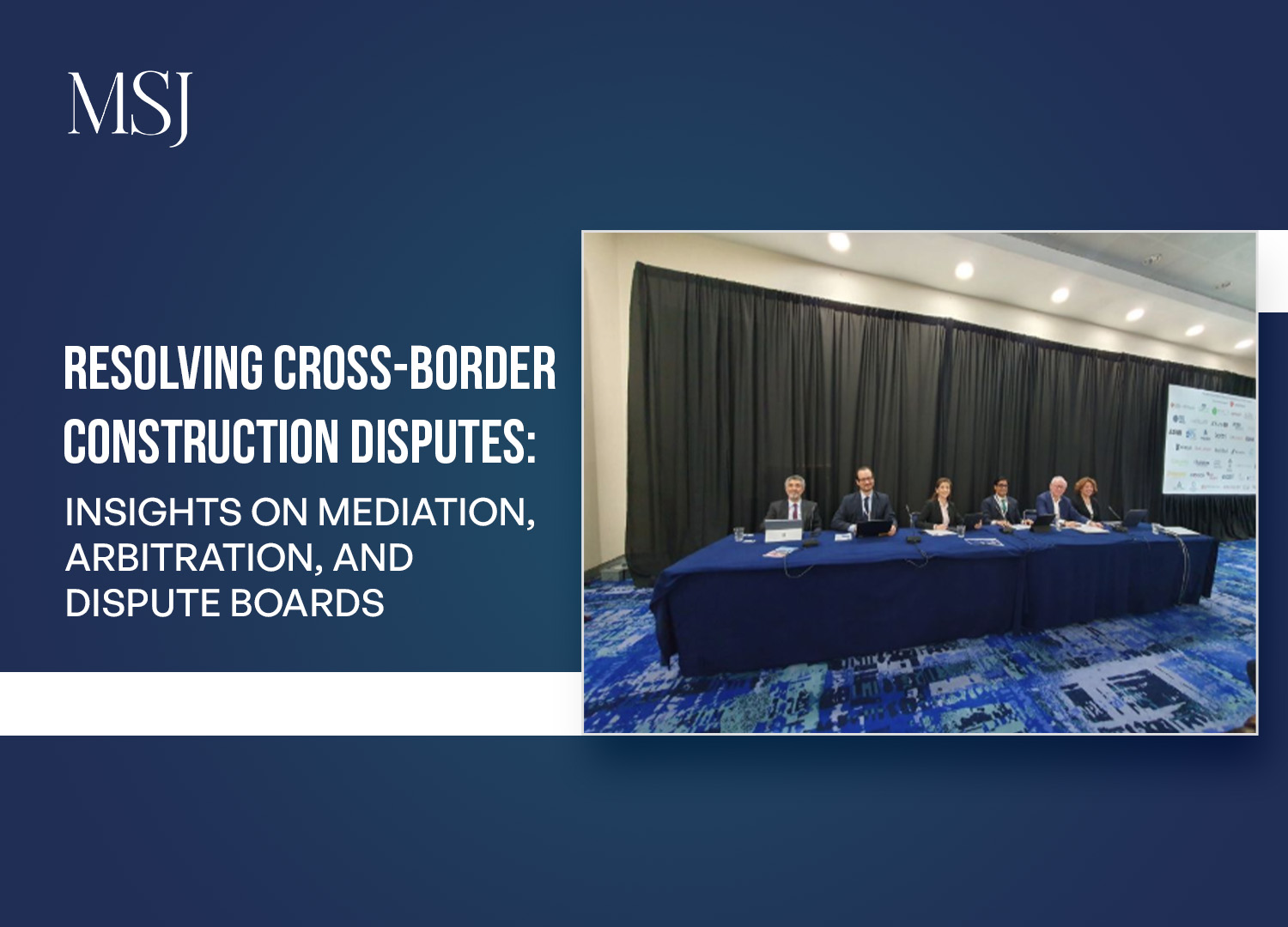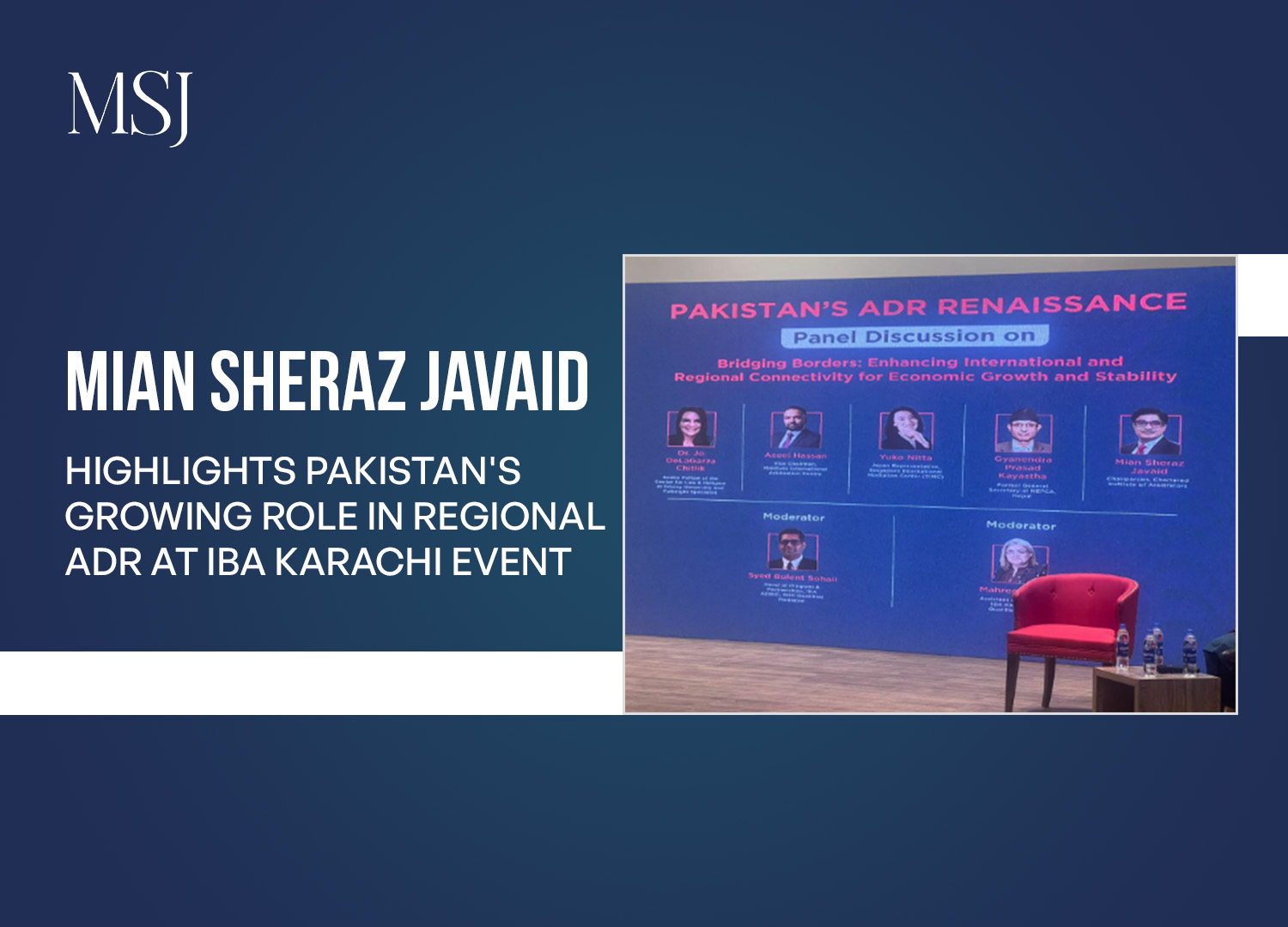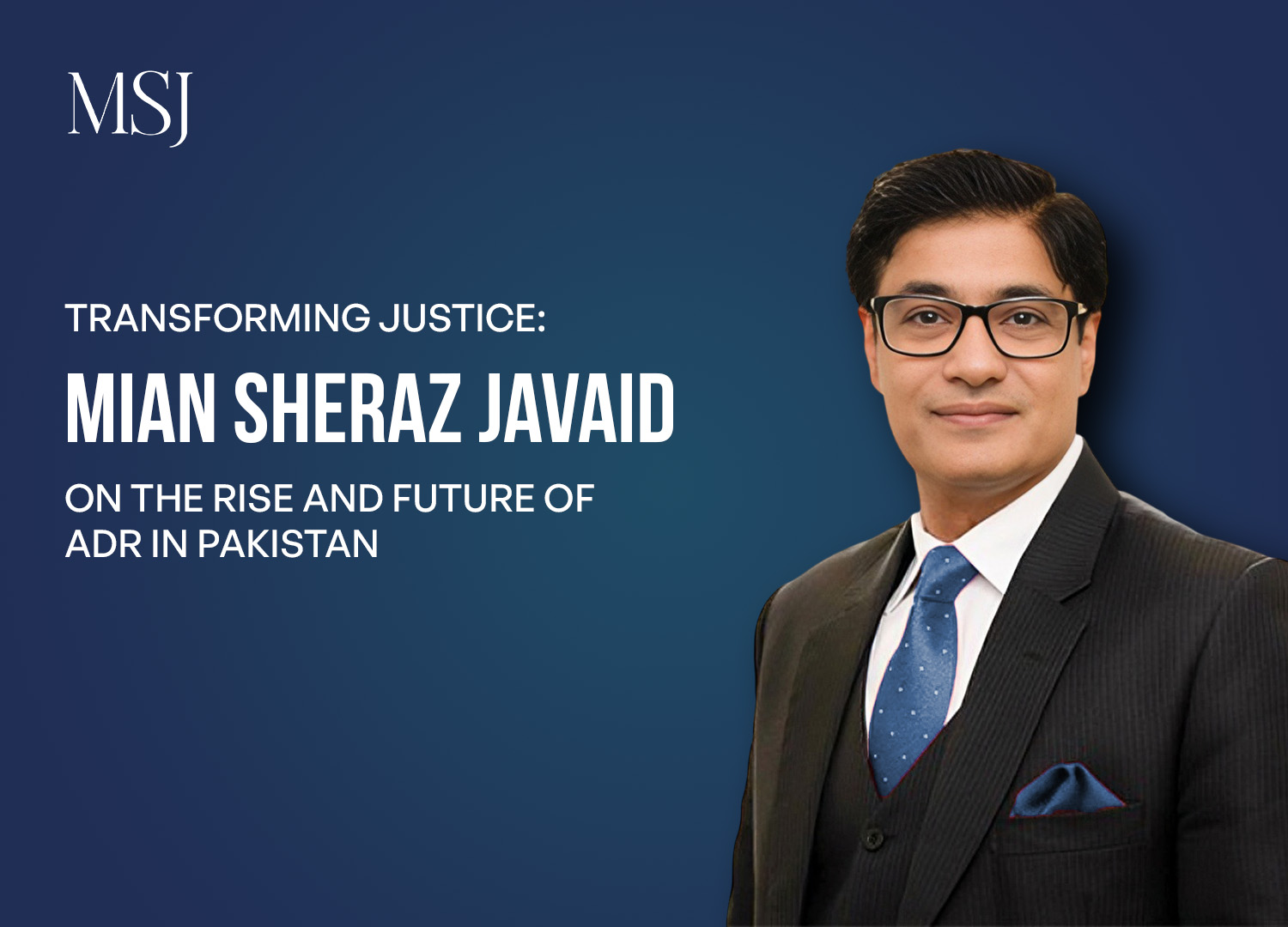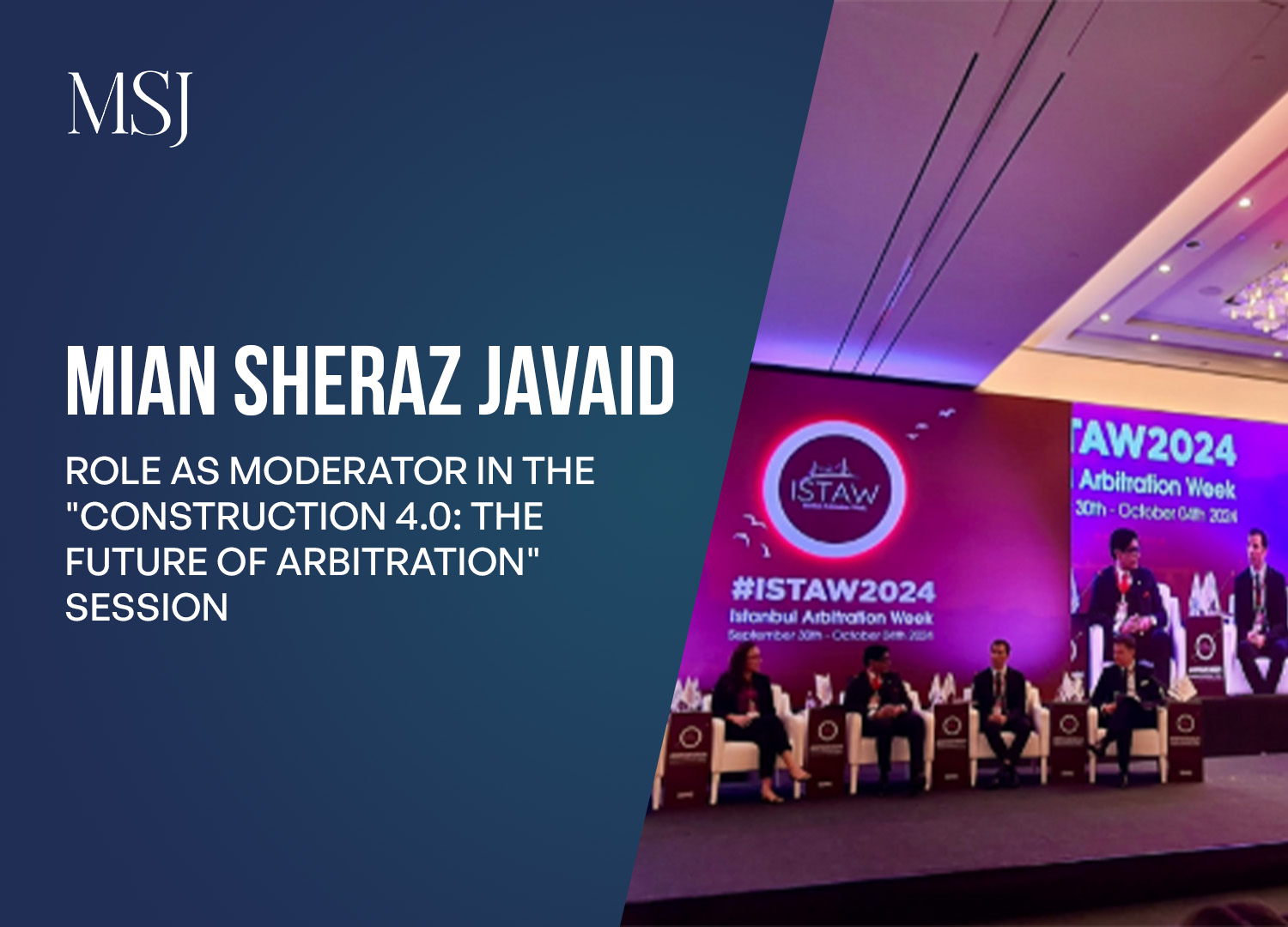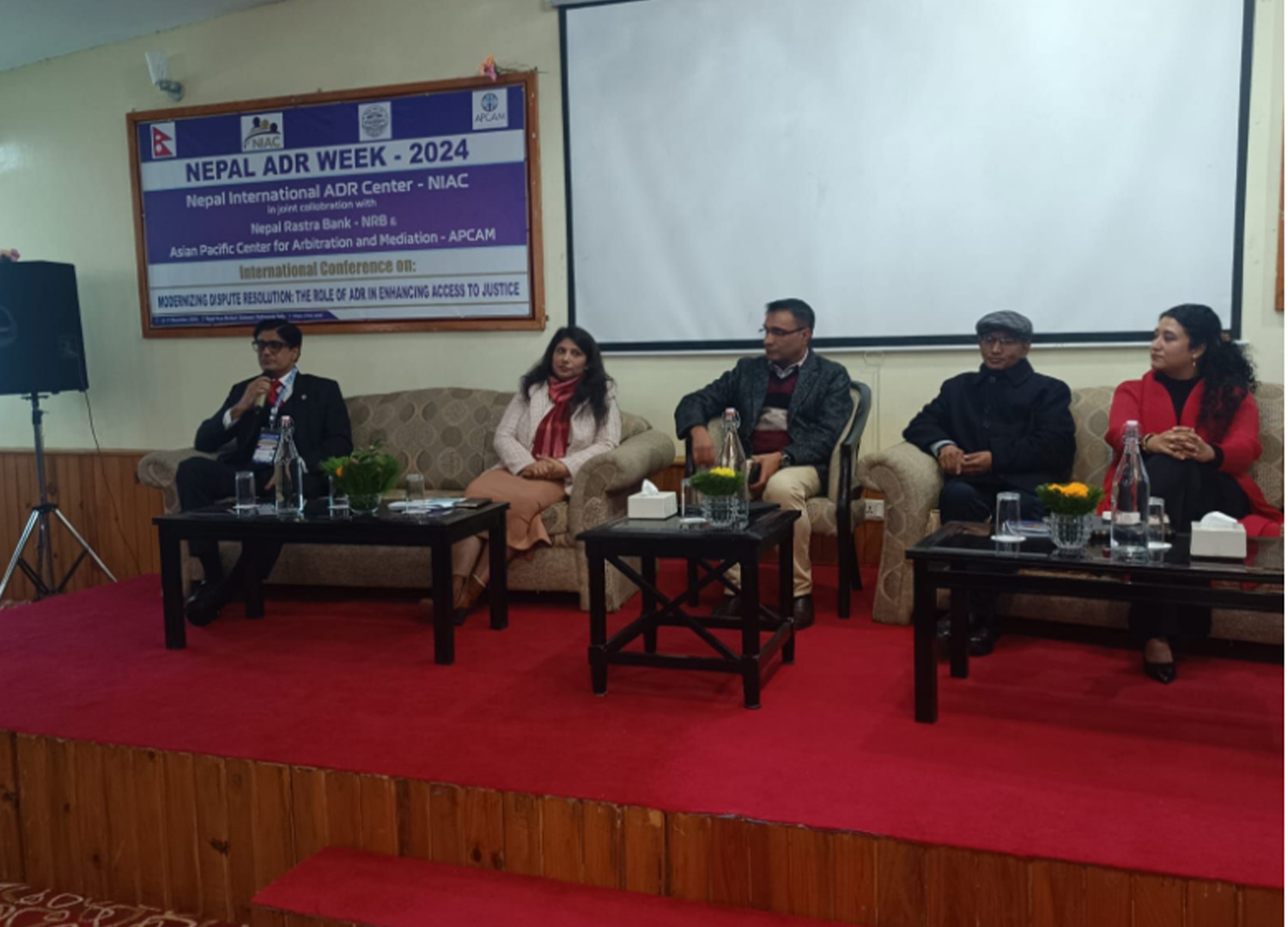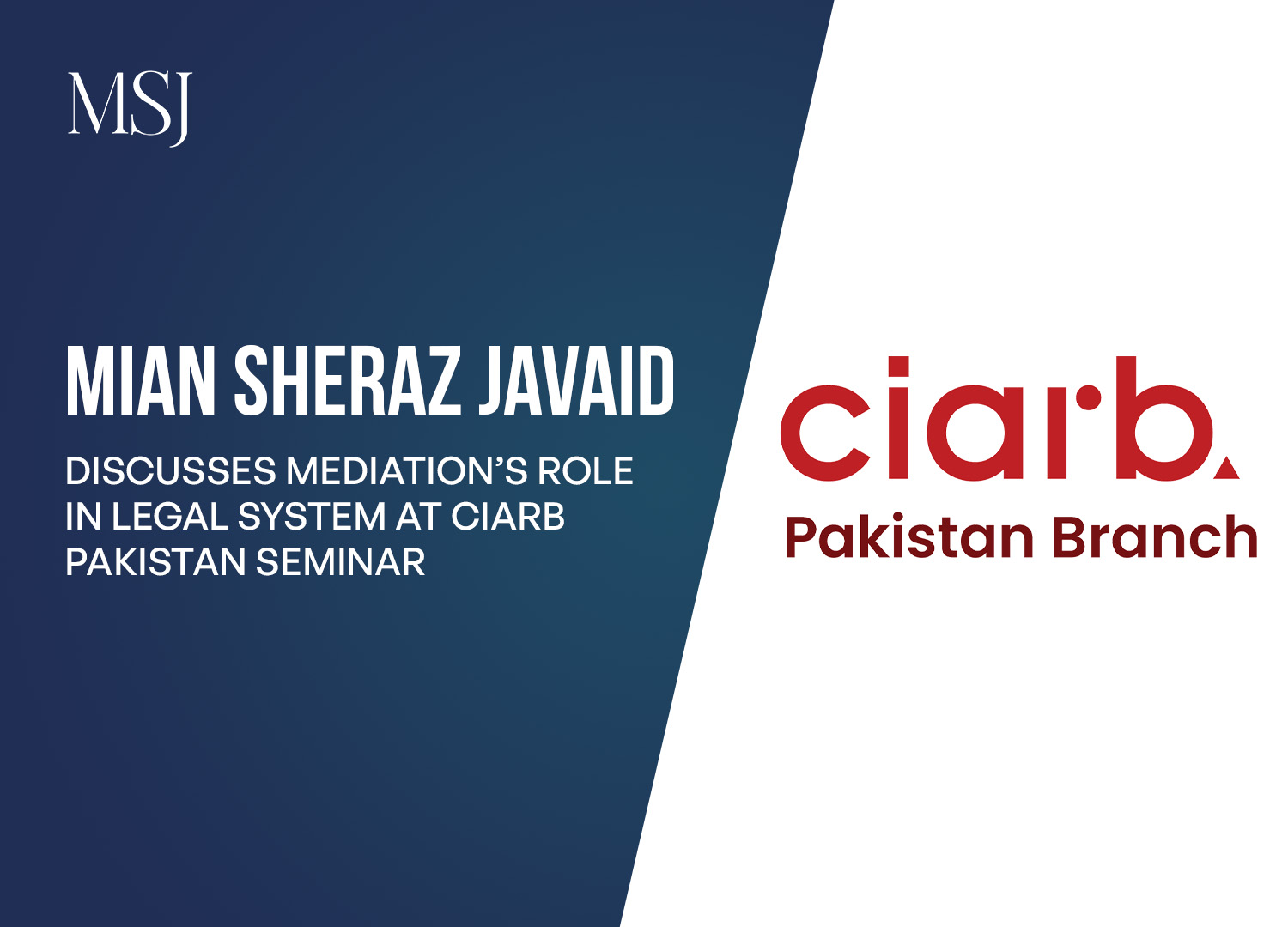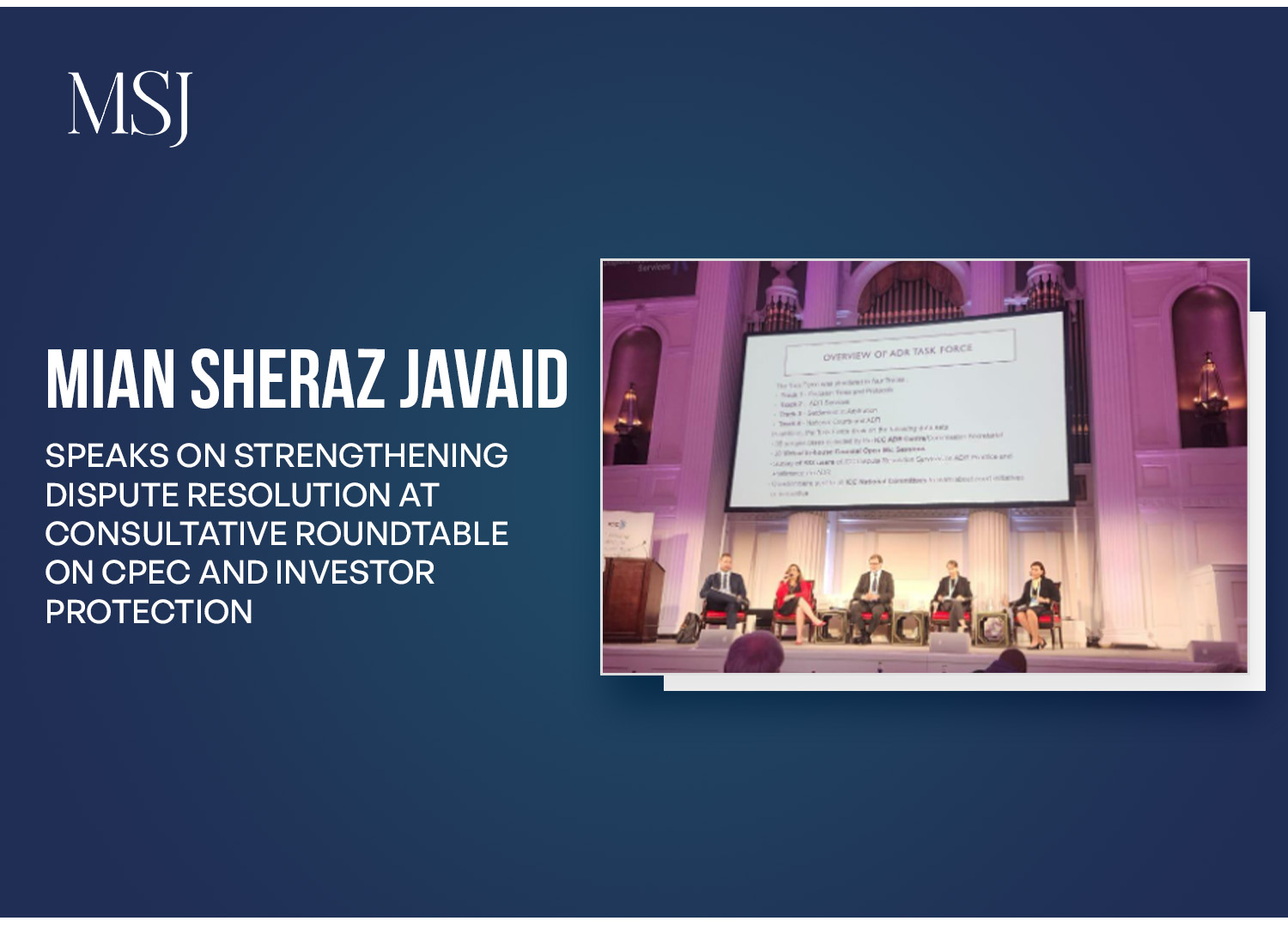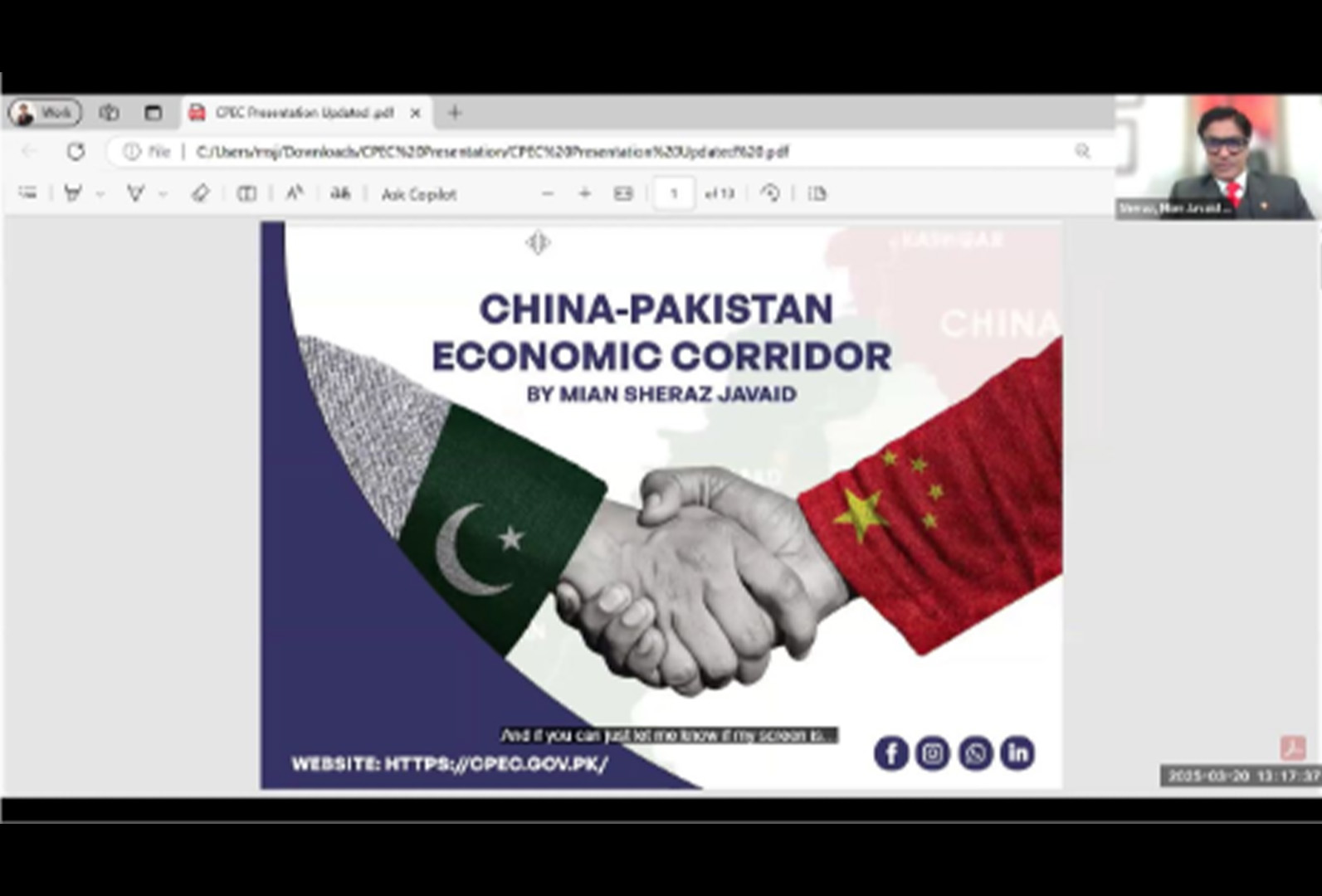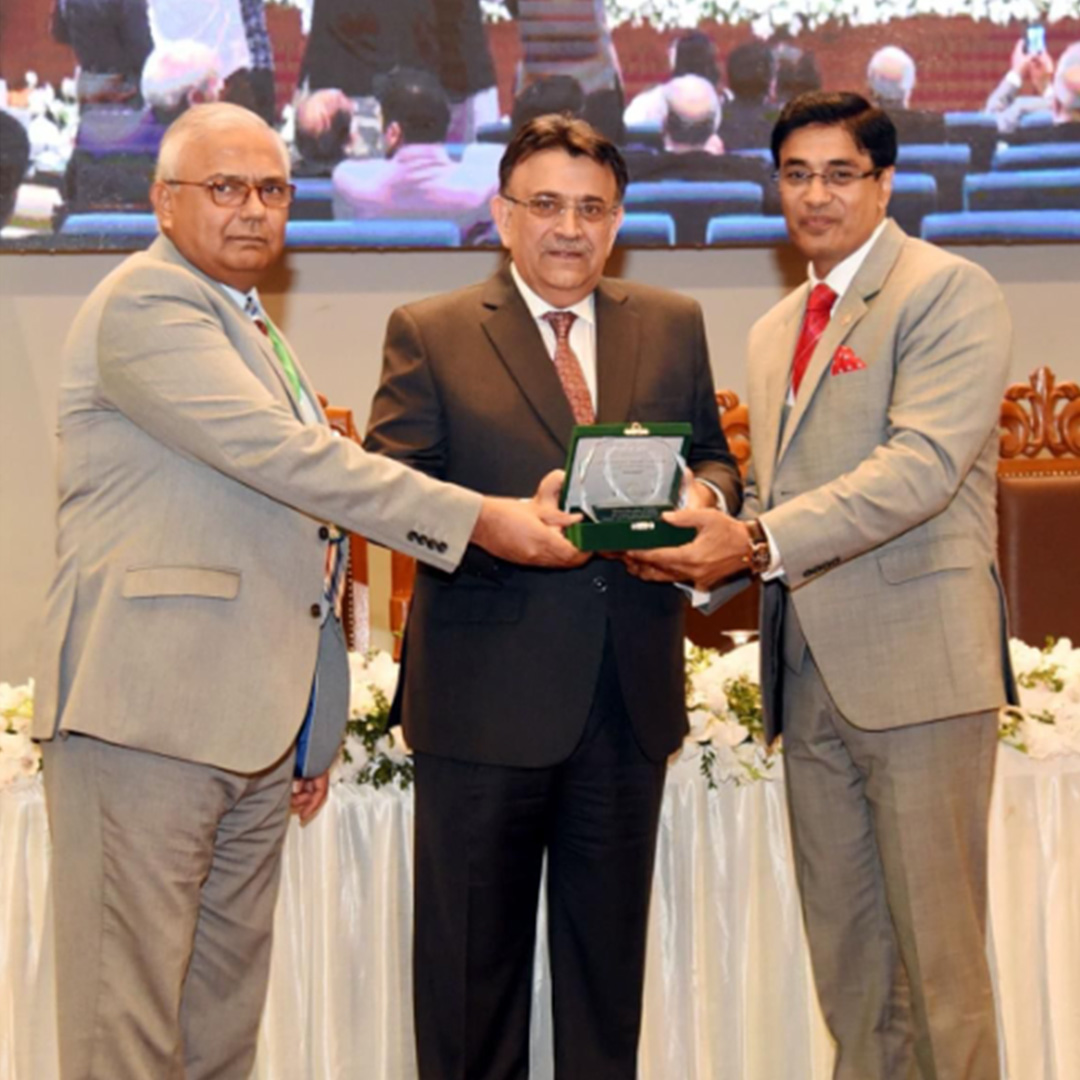Future of Mediation: MSJ on Pakistan’s ADR Framework
During a seminar titled ‘The Future of Mediation’ organized by Mirza Anwar Baig Lawyers Academy, the CIArb Pakistan Branch, and IBA-DRF on February 15th 2024, Mian Sheraz Javaid delivered a speech on Alternative Dispute Resolution (ADR) and Pakistan’s legal framework. The session consisted of an in-depth discussion on the groundbreaking judgment "Faisal Zafar vs. Siraj-ud-Din [2024] CLD 1," delivered by the Hon'ble Justice Jawad Hassan at the Rawalpindi Bench, which set a new precedent in alternative dispute resolution, emphasizing mediation's critical role and effectiveness within our legal framework.
MEDIATION IN PAKISTAN’S LEGAL FRAMEWORK
Sheraz cited the Chartered Institute of Arbitrators (Ciarb), which he said was instrumental in pushing mediation forward in Pakistan by conducting the country's first globally accredited mediation training in collaboration with the Islamabad High Court and the Federal Judicial Academy in 2022. He said that this was the start of a very important movement toward institutionalizing mediation within Pakistan's legal ecosystem. Through this program, 50 practitioners were trained and then empanelled with the Islamabad High Court as Pakistan's first set of mediators. According to Sheraz, this was the first achievement in the history of Pakistan, which paved the way for a court-annexed mediation center in the country. He emphasized that what was critical for an ambience in which mediation growth and practice could flourish was pro-active engagement and support by the judiciary itself.
He further elaborated on the overwhelming effect that the judiciary could have in encouraging mediation. Being the base of Pakistan's legal system, judges are in a crucial position to support alternative methods for resolving disputes, and they do that through mediation as well. According to Sheraz, judges are indeed the messengers of justice, and their promotion of mediation, he emphasized, would communicate a strong message to society that mediation is a practicable and preferable way for resolving disputes. Sheraz added that together with judicial endorsements and other awareness campaigns, like that conducted by Ciarb, have been pivotal to helping the acceptance and growth of mediation in Pakistan.
CASE STUDY
One of the most significant cases Sheraz mentioned to bring forth the judiciary's support for mediation is the Faisal Zafar v. Siraj-ud-Din case, decided in 2024 wherein the court ordered the parties to enter into mediation prior to proceeding with a conventional court trial. This, Sheraz said, is one of the most exemplary cases on how the judiciary has now taken the lead in actually promoting mediation as a mode of dispute resolution. He explained that the presiding judges, aware of the nature of the dispute and the likelihood of an amicable resolution, steered the parties toward mediation, thereby easing the burden on the courts while expediting quicker and more effective resolutions. He argued that this approach benefits not only the speedy delivery of justice but also gives priority to cases that truly require judicial intervention.
The case of Faisal Zafar v. Siraj-ud-Din is in line with the global trends in mediation, Sheraz noted. He quoted a recent judgement of the Court of Appeal in England and Wales—James Churchill v. Merthyr Tydfil County Borough Council—which was a landmark judgment in the field of dispute resolution. The case posed two critical questions: whether a court could mandate parties to engage in an out-of-court dispute resolution process and, if so, under what circumstances. The Court of Appeal ruled that it does indeed possess the discretion to direct parties to mediation where it deems appropriate, marking a revolutionary development in the integration of mediation into formal dispute resolution. Sheraz admitted that, although such a judgment would dramatically alter the landscape of resolving disputes in the UK, Pakistan's judiciary, although on an improving trajectory, still struggles with the complete implementation of mandatory mediation, particularly because of the deficiency in accredited ADR centers and infrastructure.
ADVANTAGES OF MEDIATION
Sheraz explained the advantages of mediation and how it can revolutionize Pakistan's legal environment. According to him, mediation is confidential, economical, and time-saving in comparison with traditional litigation. It relieves pressure on courts because cases are disposed of expeditiously, reduces legal expenses, and allows for choosing mediators and scheduling as per the convenience of the parties. More importantly, mediation offers a setting that is voluntary and collaborative, through which the disputing parties can work together to find a solution agreeable to both sides, thus preserving their relationship and reducing the emotional toll often associated with legal disputes. He also emphasized that mediation allows creative solutions beyond traditional legal precedents, thereby increasing satisfaction and public trust in the legal system.
CONCLUSION
In conclusion, Sheraz emphasized the symbiotic relationship between mediation and the judiciary as a cornerstone for Pakistan’s evolving legal ecosystem. He reiterated that the Faisal Zafar v. Siraj-ud-Din case was a perfect example of how the judiciary’s support for mediation could create lasting change. He called for continued efforts from all stakeholders, including the judiciary, government officials, and organizations such as Ciarb, to advocate for the integration of mediation into Pakistan’s legal system, ensuring that dispute resolution is both accessible and efficient.


